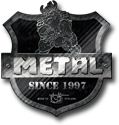Accommodating resistance for raw squats
Most people into powerlifting these days know about the popular methods of Westside Barbell for increasing the total in multiply powerlifting gear. Accommodating resistance is one of the most often used methods by the famous club.
The differences that powerlifting equipment bring to the lifts has created much confusion with people interested in the method of accommodating resistance. The same methods work, no matter what your equipment is, but the degree of accommodation needs to be thought about with regards to what your goal is with the method. 200 pounds of band tension for a 300 pound raw squatter is pointless, but for an equipped lifter the situation might be different.
In heavy powerlifting gear such as briefs and suits, the bottom of the squat is supported by a lot of tension from the equipment. This means that the top portion of the lift and also torso strength play a very big role in the success of a squat. When squatting raw – completely without equipment allowed in powerlifting not counting the belt, the critical part of the lift is just after the change of direction in the squat, or in other words a little way after coming out of the ”hole”. This is where elastic energy from the body is not available like in the bottom and the hips are far away from the bar. After passing through this critical point, the top portion of a raw squat is mostly not an issue unless technique is compromised.
So how can accommodating resistance be useful for a raw squatter? The main benefits of accommodating resistance is in activating the central nervous system to handle a greater load, activating more muscle fibers and forcing you to brace your core harder, teaching a very essential skill in powerlifting, tightness.
For accommodating resistance, chains or bands are used. For raw squatting, I would mostly recommend chains. They challenge your stabilizer muscles and at the same time allow a greater total load to be lifted for every repetition in a squat. Bands are very effective for creating a large amount of elastic energy at the bottom and can teach a lifter how to use this effect to their advantage, but the bands anchor the lifter to a straight bar pattern more than chains, and are more taxing on the body in general. Using bands in the reverse way, hanging a bar from the bands is another option, and it is useful mostly for a lifter wanting to simulate the effect of knee wraps without actually using them. The benefits for raw lifter (wraps or not) I believe are more limited than chains or bands on ground.
How much band tension, how much chains? The usual question. This is very much an individual thing and depending on many factors. Lets say you are a lifter lifting raw in WPC or IPF, not allowed to use knee wraps. I would suggest using less tension from the chains or bands, as in around 10% of the total bar weight. This will create an effect, but it will not create a weakness at the bottom of the squat in the long run. The risk of accommodating resistance is exactly that, of creating a strong top portion of the squat but neglecting strength at the bottom. For avoiding a weak bottom half, apply pause squats, box squats or squats hanging from chains/rack. This will make you stronger in the bottom half of the lift. You will be using less weight than in a normal squat, which is good for balance as with accommodating resistance you are using more weight than normal.
For a lifter using knee wraps, more accommodation is useful. Knee wraps can give you an extra 50 kilos to your squat, if they fit your squat style and strengths. The bottom part of the squat is much lighter for your body as the wraps absorb a lot of the downward energy in the descent and help coming up from reversal.
So you can try to mimic the effect of your wraps with chains for example. Adjust the weight and setup of the chains to mimic a squat with wraps. Just be careful of not stressing your body too much, and still keep in mind that full range of motion strength is essential for developing long term progress. A weakness somewhere in the body will manifest in the form of stalling development, as your body knows its limits and won’t allow you to lift more than the muscles can handle to avoid injury.




No comments yet.